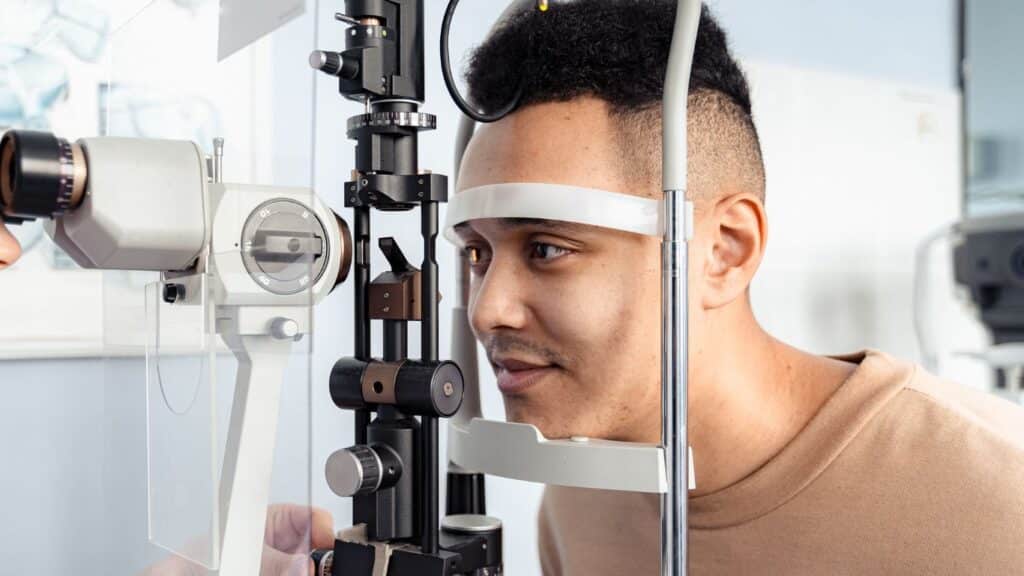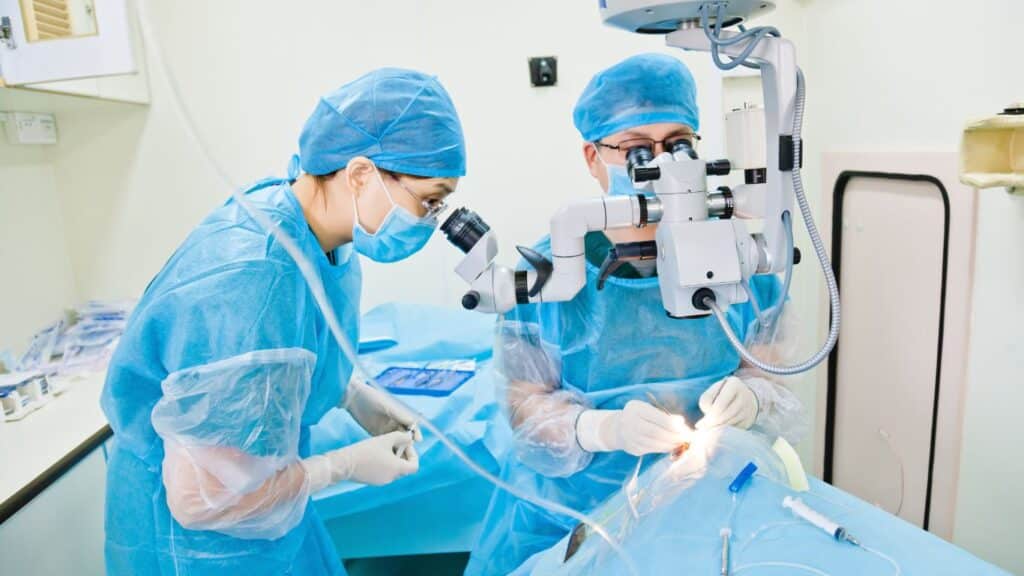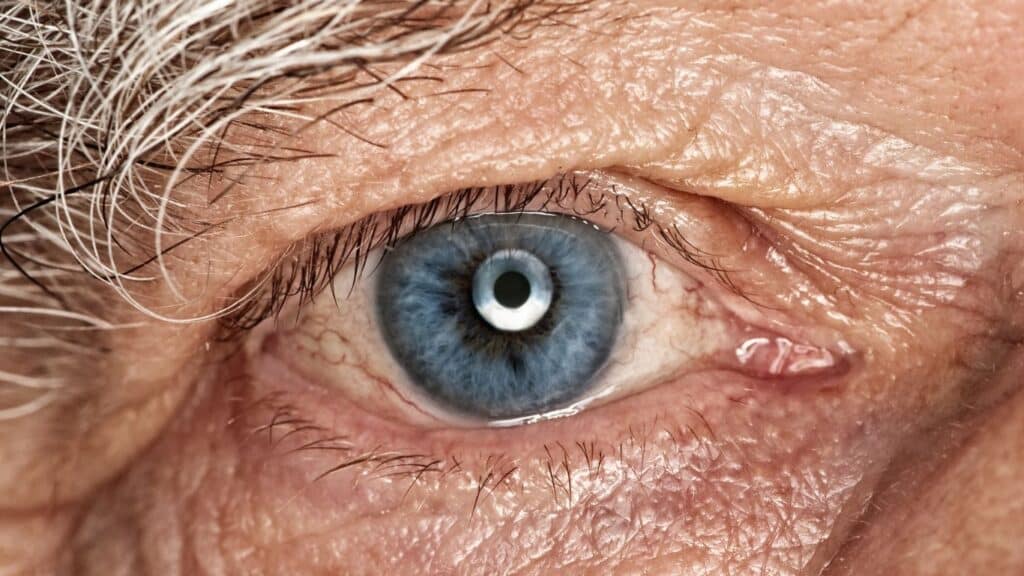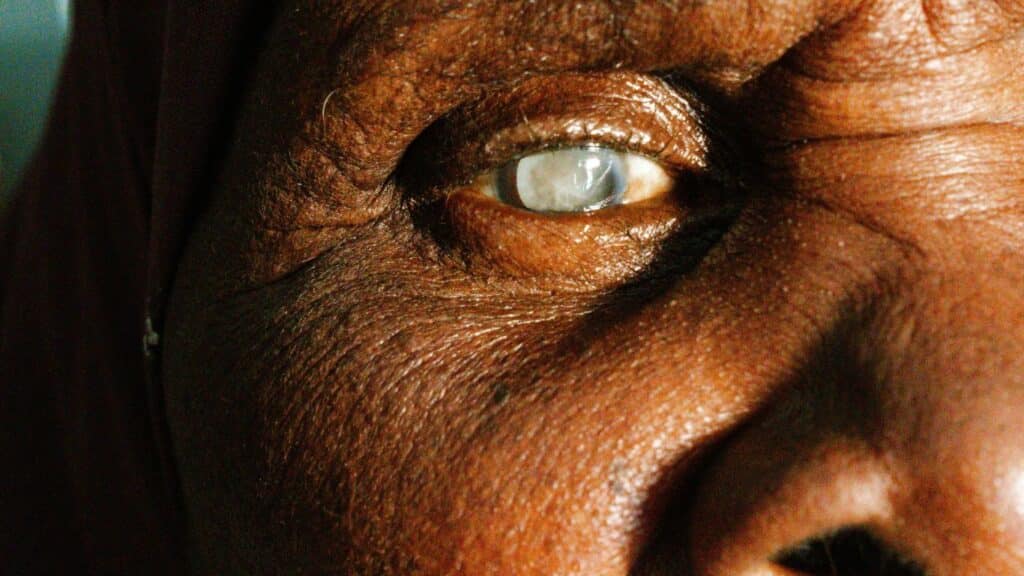Cataracts are the leading cause of vision loss around the world, affecting over 65.2 million people. In the U.S., more than half of adults will develop them by age 80.
This common eye condition causes the lens to become cloudy, resulting in blurry vision and dull colors. Tasks like reading, driving at night, or recognizing faces can become more challenging.
Modern surgery is safe and highly effective at restoring clear vision. And TVLC is here to guide you every step of the way, from diagnosis to surgery and aftercare.
Book Your Cataract Consultation!
The lens of the eye is a clear, flexible structure located behind the iris and pupil. It's composed primarily of water and crystalline proteins arranged in a highly organized way that keeps the lens transparent.
The lens's job is to bend (refract) light rays onto the retina, enabling sharp vision at various distances.
As we age or encounter certain risk factors, these proteins can begin to break down or clump together due to oxidative stress.
This causes the lens to lose its clarity, a process much like how egg whites turn opaque when cooked. The resulting cloudiness scatters light and reduces the eye’s ability to focus properly.
Cataracts typically develop slowly over years or even decades. In the early stages, vision changes may be mild and easy to overlook. Over time, the cloudiness increases, making daily tasks more difficult and eventually requiring surgical correction.
Lastly, it's important to note that while cataracts cause vision to become cloudy, they are different from glaucoma. Cataracts affect the lens of the eye and are treatable with surgery, while glaucoma damages the optic nerve and often involves increased eye pressure.
Cataracts can affect different parts of the lens and develop for various reasons. Knowing the type can help guide your treatment and care plan.
| Type | Location | Key Characteristics |
| Nuclear Sclerotic | Lens center (nucleus) | Yellowing or browning; gradual progression; may improve near vision temporarily ("second sight") |
| Cortical | Lens periphery | Wedge-like white opacities; glare and contrast issues |
| Posterior Subcapsular | Back of lens | Rapid onset; especially affects near vision; intense glare sensitivity |
| Congenital/Traumatic | Variable | Present at birth or following injury; associated with genetic syndromes or radiation exposure |

Cataracts often begin without noticeable symptoms. As the lens becomes cloudier, visual changes start to appear. These include:
These symptoms can impact daily function, making it harder to drive, read, or even recognize faces. In advanced cases, cataracts may significantly increase the risk of falls and other injuries.
Cataracts can occur in one eye or both, and the rate of progression may differ between them.
While getting older is the most common reason people develop cataracts, there are several other things that can raise your risk.
Non-modifiable risks include:
Modifiable risks include:

You or a loved one can also try a simple and interactive cataract self-test at home if you notice symptoms. However, it's important to always follow up with a qualified eye care provider for a full diagnosis.
Your eye doctor will check your vision and examine different parts of your eye to look for signs of clouding.
At TVLC, we’re here to support you through cataract diagnosis with compassion and clarity. We'll likely perform:
Doctors may also use symptom surveys like the MIPS Measure #303 to understand how your cataracts are affecting your daily life.
If you're over 60 or have risk factors like diabetes or smoking, it's a good idea to have a full eye exam every year to monitor for cataract development.
Book Your Cataract Consultation!
In the beginning stages, cataracts may not need surgery right away. There are a few helpful ways to manage symptoms and keep your vision comfortable.
Some common options include:
These steps can make a noticeable difference for a while.
But it’s important to know that cataracts don’t go away on their own. There are no eye drops or medications that can reverse them. When symptoms start to interfere with your life, cataract surgery is usually the best and only long-term solution.

When cataracts make it hard to do things like drive, read, or recognize faces, surgery is usually recommended. Thankfully, cataract surgery is one of the safest and most successful procedures in medicine.
The most common method is called phacoemulsification.
In this procedure, a surgeon uses an ultrasound probe to break up the cloudy lens and remove it through a tiny incision, usually 2 to 3 millimeters. Then a new artificial lens (called an intraocular lens or IOL) is placed to restore clear vision.
The entire surgery usually takes just 10 to 20 minutes and is done on an outpatient basis, meaning you go home the same day.
Here’s a quick look at the main types of cataract surgery:
| Technique | Estimated Cost (per eye) | Key Features |
| Phacoemulsification | $3,000–$5,000 | Small incision, quick recovery, most common option |
| Laser-Assisted (FLACS) | $4,000–$7,000 | More precise but not usually covered by insurance |
| Extracapsular (ECCE) | $3,000–$5,000 | For advanced cases; larger incision required |
And here are your lens choices:
Cataract surgery continues to evolve, with new advances making the procedure faster, safer, and more convenient. At the 2025 ASCRS meeting, several breakthroughs were announced that may improve outcomes and simplify recovery.
Most people recover from cataract surgery in about 4 to 8 weeks, though many notice better vision just a few days after the procedure. During recovery, your doctor will prescribe special eye drops to reduce inflammation and prevent infection.
The results are very encouraging. More than 80% of patients achieve 20/40 vision or better, good enough to pass a driving test in most states. Even better, over 90% say their quality of life has improved thanks to clearer sight.
That said, complications are possible, though rare:
While cataracts can’t always be prevented, there are simple things you can do to slow them down:
While cataract surgery is common and accessible in places like the U.S., millions around the world still suffer from vision loss due to cataracts. In lower-income countries, cataract-related blindness accounts for nearly 90% of all cases worldwide.
Why the gap? There’s a major shortage of eye doctors. For example, in parts of Africa, there are only about 2.5 ophthalmologists per million people, compared to over 70 in high-income countries.
Still, there’s hope:
Cataracts don’t go away on their own, but surgery can restore your vision with amazing results. In fact, cataract removal is one of the most successful surgeries in the world, helping over 90% of patients see clearly again.
With regular eye exams, healthy habits, and timely treatment, you can protect your vision for years to come. Globally, expanding access to surgery and training more eye care professionals will be key to reducing avoidable blindness caused by cataracts.
Book Your Cataract Consultation!



